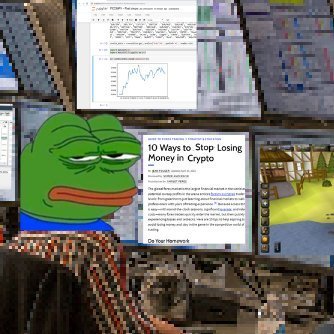You follow me to get technical insights on cutting edge financial instruments. So here is one that the cabal will never tell you: Aave is NOT risk-free.
When you deposit $$$ into a lending market, you get interest paid by anyone borrowing from your dollar deposit. "Borrowing" means they literally withdraw the dollars into their wallet. Your dollars are in fact no longer deposited in the lending market. They're in some random person's wallet. What you see on the UI is a LIE. You can also think of it as an IOU.
But wait, I hear you cry, "they had to deposit collateral in order to borrow!"
That's right. The collateral is indeed there. But let's run a thought experiment. BTC is at $120k. You deposit $60k on the lending market. I deposit 1 BTC and borrow $60k against it. The lending market now has 1 BTC and 0 USD in it. BTC crashes to $100k and you want your USD back so you can buy the dip. But there is no USD in the market currently, only BTC.
How does the lending market handle this scenario? That's something lending markets differentiate themselves on and something you should consider when choosing one. On Aave for example, interest rates skyrocket as the pool's "utilization" increases, effectively triggering flash liquidations of otherwise healthy positions. Morpho's architecture somewhat mitigates that by allowing vaults to manage risk independently. Other providers can implement additional mechanisms to disincentivize bank runs.
At the end of the day, the USG can print infinite dollars. Aave cannot print infinite dollars—and that's why it is NOT risk-free.
2,482
3
本頁面內容由第三方提供。除非另有說明,OKX 不是所引用文章的作者,也不對此類材料主張任何版權。該內容僅供參考,並不代表 OKX 觀點,不作為任何形式的認可,也不應被視為投資建議或購買或出售數字資產的招攬。在使用生成式人工智能提供摘要或其他信息的情況下,此類人工智能生成的內容可能不準確或不一致。請閱讀鏈接文章,瞭解更多詳情和信息。OKX 不對第三方網站上的內容負責。包含穩定幣、NFTs 等在內的數字資產涉及較高程度的風險,其價值可能會產生較大波動。請根據自身財務狀況,仔細考慮交易或持有數字資產是否適合您。


